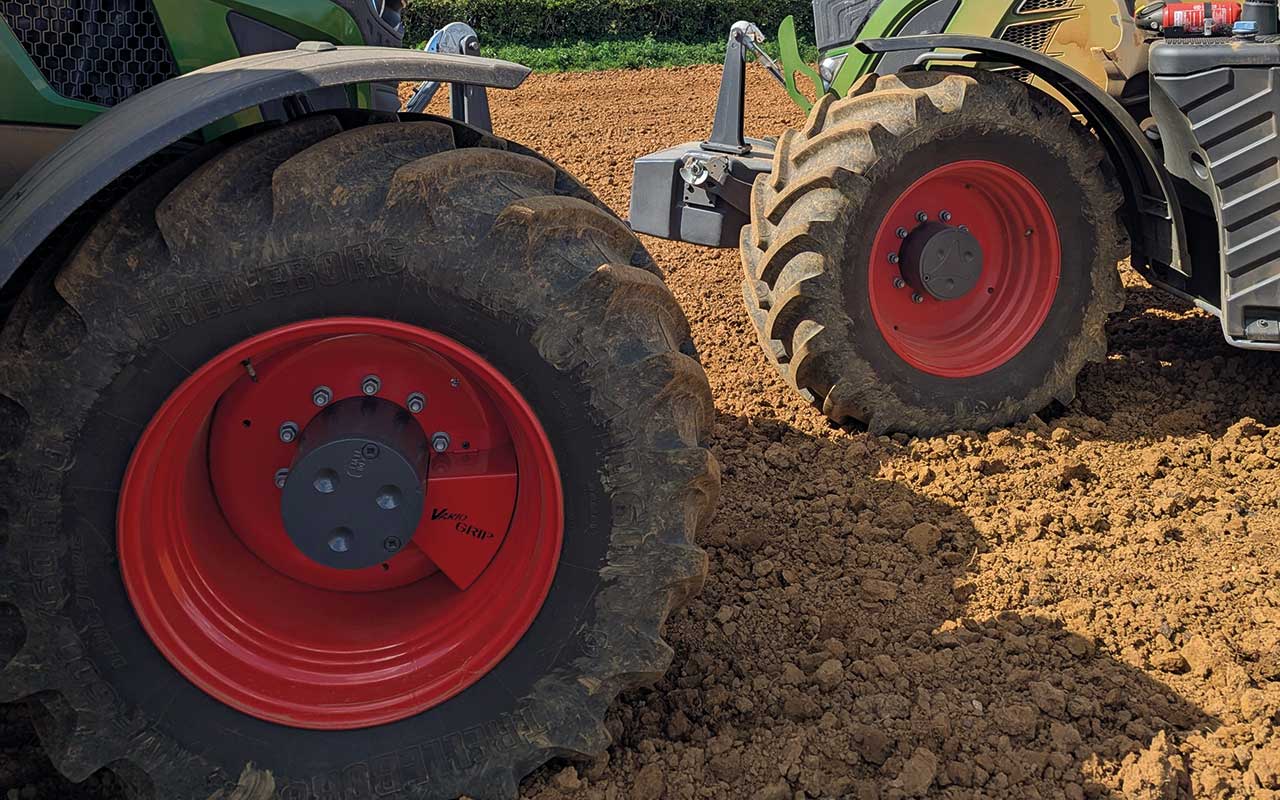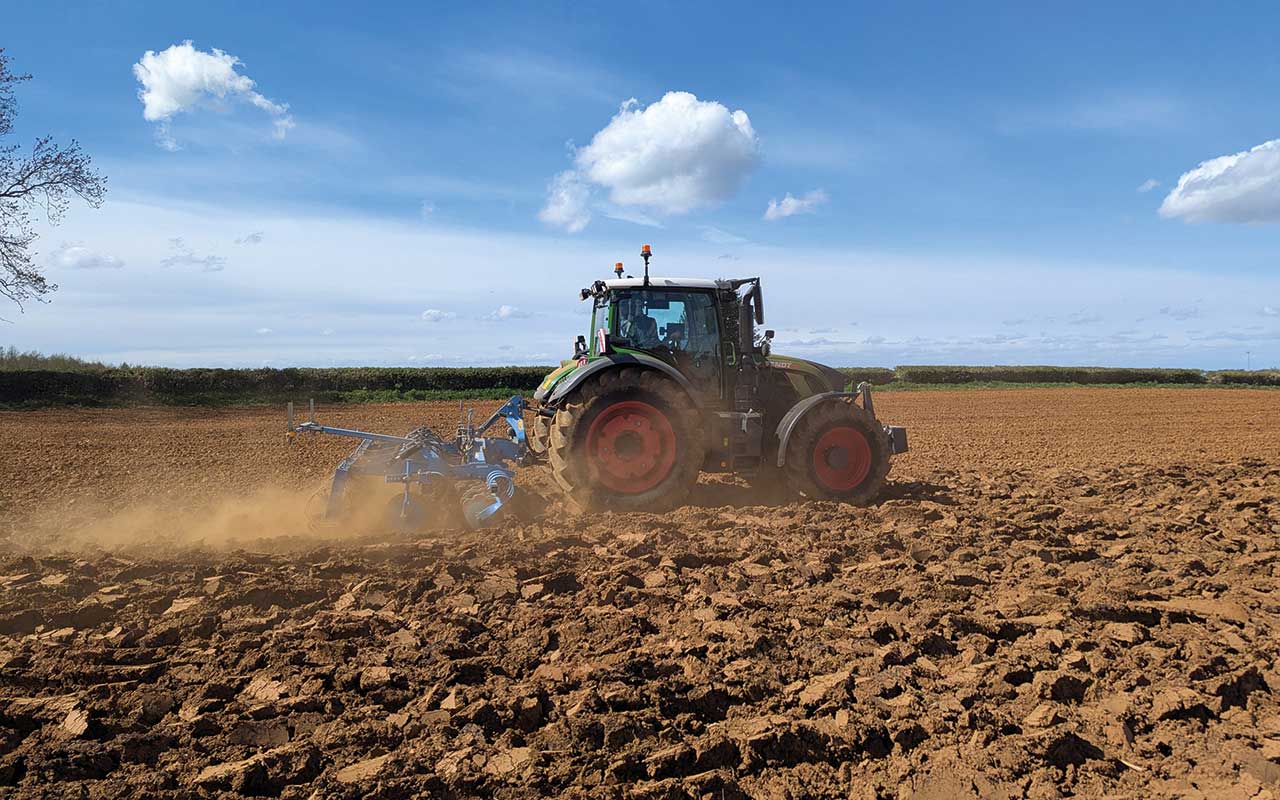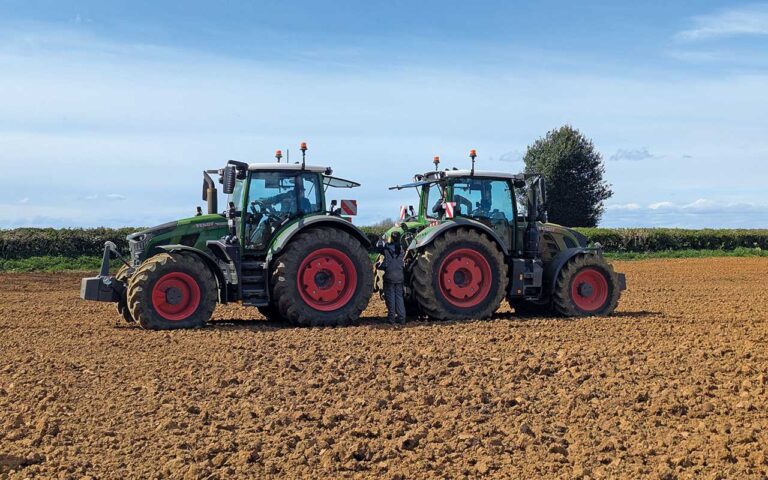When Fendt announced in 2023 that it would replace the Gen 6 700 Vario series with the four-cylinder 600-series, while boosting the power range of the next-gen 700, the company acknowledged it was one of the most important things to get right.
Speaking at an event at Attlefield Farm Machinery, near Daventry, Philip Mattey, product expert for wheeled tractors, said the emphasis was on Fendt to prove to its customer base that the 600 Vario is a worthy successor.
The event was designed around this, not necessarily bringing new information to the table, but showing in practical terms that the 600-series could match the outgoing 700 Vario both in the field and on the road.
The four models in the 600 Vario line-up range from 149hp up to 224hp, powered by a four-cylinder AgcoCore engine.
Philip notes that while the 600 is two cylinders short of the outgoing 700 Gen 6, which was powered by a six-cylinder Deutz box, it makes up for this with significantly larger pistons, with an 11mm stroke.
“This is a ground-up design that provides the Fendt with a future-ready platform, which can be adapted for
future fuels as well as offering flat curves for both power and torque, rather than the distinctive peaks seen in the previous 700 model.”
Power is put to the ground through the VarioDrive system, which has been brought down the range from the flagship wheeled tractor, the 1000 Vario.
This continuously variable gearbox automatically adjusts power between each of the four wheels, providing a responsive four-wheel-drive system up to about 20kph.
At this speed, the clutch linking the front and rear axles decouples and releases the equivalent of about 13hp, cutting back on fuel consumption.

Four cylinders on the road
The day was organised as a series of like-for-like comparisons between the 209hp 620 Vario, with Dynamic Performance intelligent boost adding 15hp, and the 724 Vario with 237hp under the bonnet.
Our first experience with the machine was on a 30min road run, with both tractors pulling a 16t Ktwo trailer half filled with fermented maize.
The run had a good mix of long inclines, as well as country roads and passing through local villages. The 620 was impressive on the road, easily handling the trailer, even on the longest uphill stretch.
It was also comfortable, with no noticeable jolts from the automatic gearbox and all-round suspension dampening the uneven road conditions.
All in all, it felt very similar to the larger 724, and there was only one point on the journey when the 724 seemed to be performing better – catching the four-cylinder model up on the longest uphill drag, suggesting that in the most difficult conditions the added weight of the six-cylinder machine might come in handy.
Looking at the performance results from the TaskDoc system in the FendtOne terminal, fitted to both tractors, on the first run the 620 burned 10.1 litres of diesel, compared to 11.3 litres.
Over 100km of road travel this would equate to about 6.65 litres saved in fuel. The estimated per-hour usage was also down by about 1.1 litre.
Interestingly, the AdBlue consumption on the 620 was up when comparing over 100km, with it using about 4.3 litres compared to 2.2 litres on the 724.
This likely means any cost benefits would be cancelled out, at least during transport operations.
While the savings are perhaps negligible on the road, the performance was definitely impressive, as was the comfort of the new model. While the 700 Vario was certainly not a bad tractor to sit in, there were noticeable differences in the noise levels, with the 620 being quieter.

Four cylinders in the field
The benefits were more pronounced when working in the field. Both tractors were equipped with a 5m Vaderstad Carrier and a 1,250kg front weight, and were running with no wheel weights.
After 24 minutes of operation in the same field – to rule out any drastic changes in conditions – the 620 had burned 12.5 litres of diesel compared to the 724’s 15.1 litres.
When spread over an hour this was estimated to increase to 31.2 litres on the four-cylinder machine, about 6.5 litres less than the larger tractor every hour.
The fuel consumption per hectare was 7.4 litres on the 724 and 6.1 litres on the 620, meaning that some significant savings could be possible across a wide area.
It also shows that in good, dry conditions, the 620 could easily match the 724 in general performance. Interestingly, the AdBlue consumption figure was much closer in the field, with the 620 using just 0.1 litre more per hectare.
There were additional benefits to the 620. The intelligent power supply to the front and rear axles enables the front wheels to rotate faster during turning manoeuvres, providing a tighter turning circle.
This was demonstrated in the field, with the 620 starting at the same point as the 724 and being able to turn within the larger machine’s turning circle.
The team were quick to point out that the purpose of these tests was not to discredit the outgoing 700 series, nor the larger Gen 7 700 Vario. Instead, it was to give customers options.
If the bulk and weight of the six-cylinder machine is necessary when pulling larger implements in difficult or steep conditions, Fendt is able to provide a tractor.
Equally, operators could see some not-insignificant savings if the four-cylinder 600 Vario can operate on their farm.


